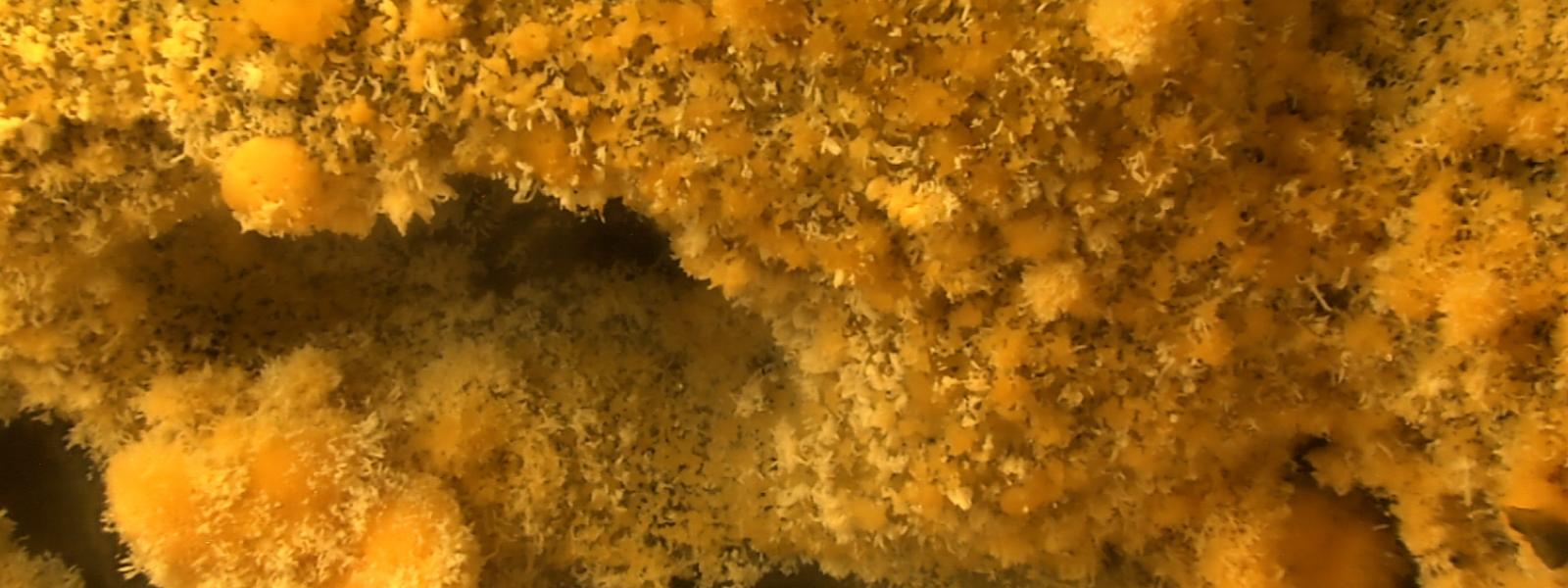
A team of scientists has gone fishing, but they’re interested in more than the bounty of the seas: They’ve also cast out nets on land. And they’ve never left the laboratory.

Their “nets” are high-powered chemical and biological analyses. The team, a group of cancer biologists, dermatologists, biochemists, natural product chemists, and bioinformaticians, hasn’t been fishing for creatures. Rather, they want to find natural products—organic materials and chemical compounds derived from organic materials. Their goal is to target Merkel cell carcinoma (MCC), a rare skin cancer.
Their analyses have rapidly screened tens of thousands of synthetic and natural compounds. To broaden the search, they’ve also investigated extracts sourced from marine life (like sea sponges) or terrestrial organisms (like parasitic fungus) and all manner of life in between.
Natural products have long been used in cancer therapies, and the wealth of yet-unstudied mechanisms and untapped chemical diversity means the field remains ripe for finding new compounds and new ways of targeting cancer cells.
The team screened more than 45,000 samples for activity against two types of MCC cells and one type of healthy, noncancerous skin cells. From the massive collection, they hauled in a small group of hits—compounds and extracts that kill the cancer cells substantially more potently than they do the healthy cells. The findings, interim results from an ongoing line of research in the Molecular Targets Program, part of the National Cancer Institute’s Center for Cancer Research, appeared in Scientific Reports this summer.

Casting out for treatments and tools
One part of the project sought to find effective potential treatments that would cause minimal side effects and do no widespread harm to patients. Doctors normally use surgery and radiation to treat MCC tumors that haven’t spread, and immunotherapy to treat ones that have. However, MCC is highly aggressive and often returns after treatment. More diverse and precise therapies are needed.
The other half of the project sought to identify compounds that could be used as research tools. Finding compounds and learning how they target cancer cells gives scientists a chance to turn them into probes or reagents, says Curtis Henrich, Ph.D., a principal scientist in the Basic Science Program at Frederick National Laboratory and a senior author on the study. The probes could allow scientists to manipulate MCC’s behavior in the laboratory to learn more information about its physical and chemical vulnerabilities.
“We chose to go with what you call a ‘target-agnostic approach,’ which means that we’re not defining ahead of time what molecular target we’re going after. … In this case, we wanted compounds that could work by a variety of ways, and in fact, that’s what we found,” Henrich said.
Pool narrows to products with potential
Henrich’s team, which is embedded in the National Cancer Institute Molecular Targets Program, evaluated whether the compounds killed either or both types of the tested MCC cells without being overly toxic to the control skin cells. The successful ones moved on to a secondary analysis. There, they were tested in six types of MCC cells, along with a healthy control to assess whether they’re broadly effective.
It was gratifying “when we went from the three-cell [assay] to the seven-cell [assay] and to see that it was accurate across all,” said Emily Smith, the
study’s lead author and a research associate in Henrich’s laboratory. “Our representative cell line was accurate, and I liked seeing that.”
The secondary analysis narrowed the pool to slightly more than 20 compounds that targeted the cancer cells. Sixteen were known. The others weren’t.
“We found a number of samples with known mechanisms that were just kind of all over the place, so the next stage of that is to target how these are affecting Merkel cell carcinoma cells,” Henrich said, adding that doing so will help identify possible new targets for treatment.

The team’s decision to use several types of MCC cells was important. MCC comes in two forms: one caused by a polyomavirus, and the other caused by a series of genetic mutations. Three types of the studied cancer cells had viral origins, and the other three had mutation origins. That means the team can use the current data about the compounds’ effectiveness in each type of cell to study their effects more precisely. It lets them look at the compounds where they make the greatest impact.
Henrich’s team conducted the study in partnership with Isaac Brownell, M.D., Ph.D., and his laboratory at the National Cancer Institute. (Brownell’s laboratory has since moved to the National Institute for Arthritis and Musculoskeletal and Skin Diseases.) Brownell was intrigued by the potential use of natural products to treat MCC and asked Henrich’s team to collaborate. Analysts at the Frederick National Laboratory and chemists at the Molecular Targets Program joined the effort.
The team continues to investigate how the compounds interact with the MCC cells. Any new treatments are far off, but these interim results may help chart a course for the next steps.
“[We’re] not really thinking there’s going to be a drug tomorrow,” Smith said, but added that the findings create new opportunities to move toward possible treatments. “How can we exploit [those] for treating? That’s probably what I’m most looking forward to.”
Media Inquiries
Mary Ellen Hackett
Manager, Communications Office
301-401-8670
